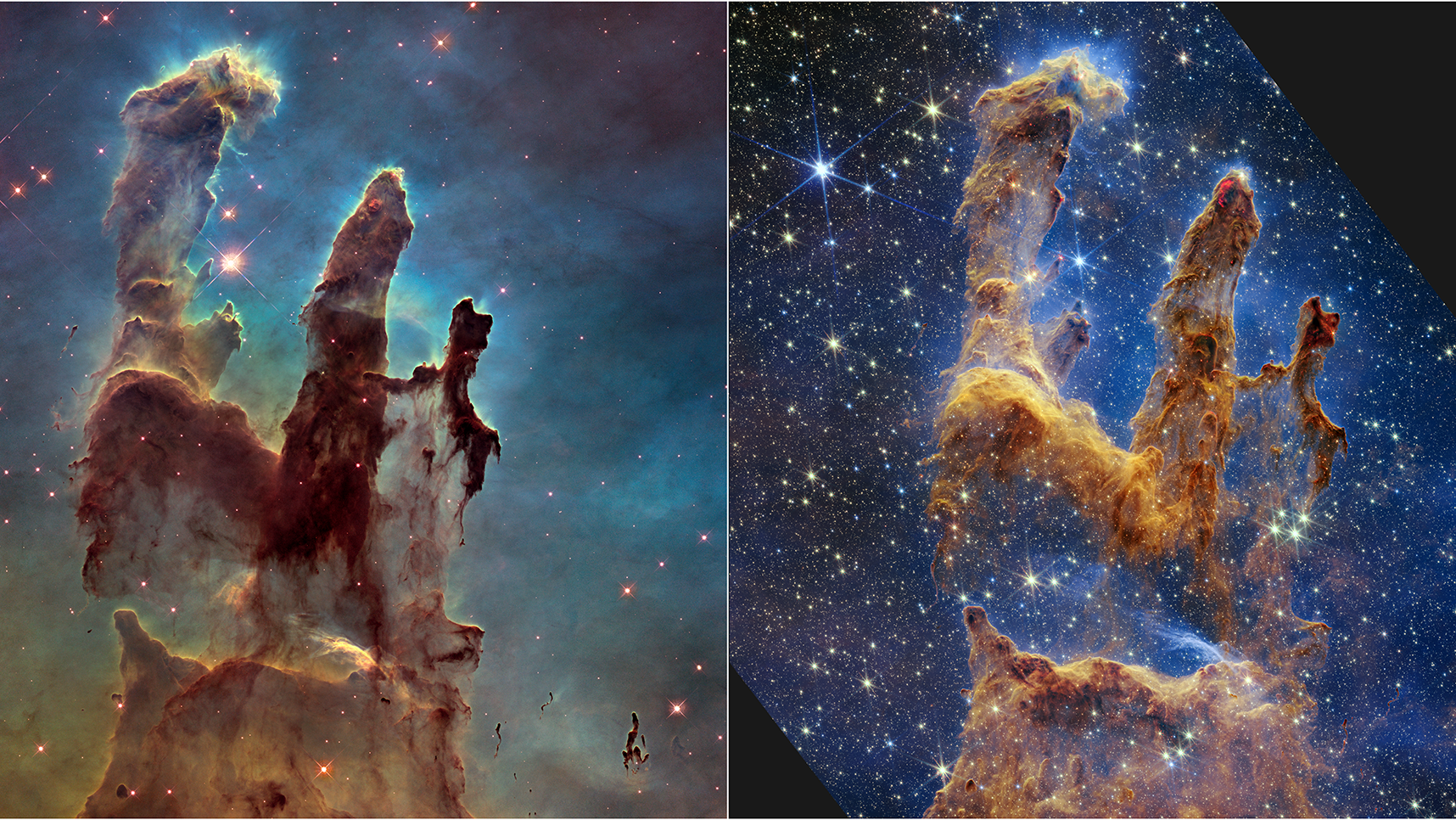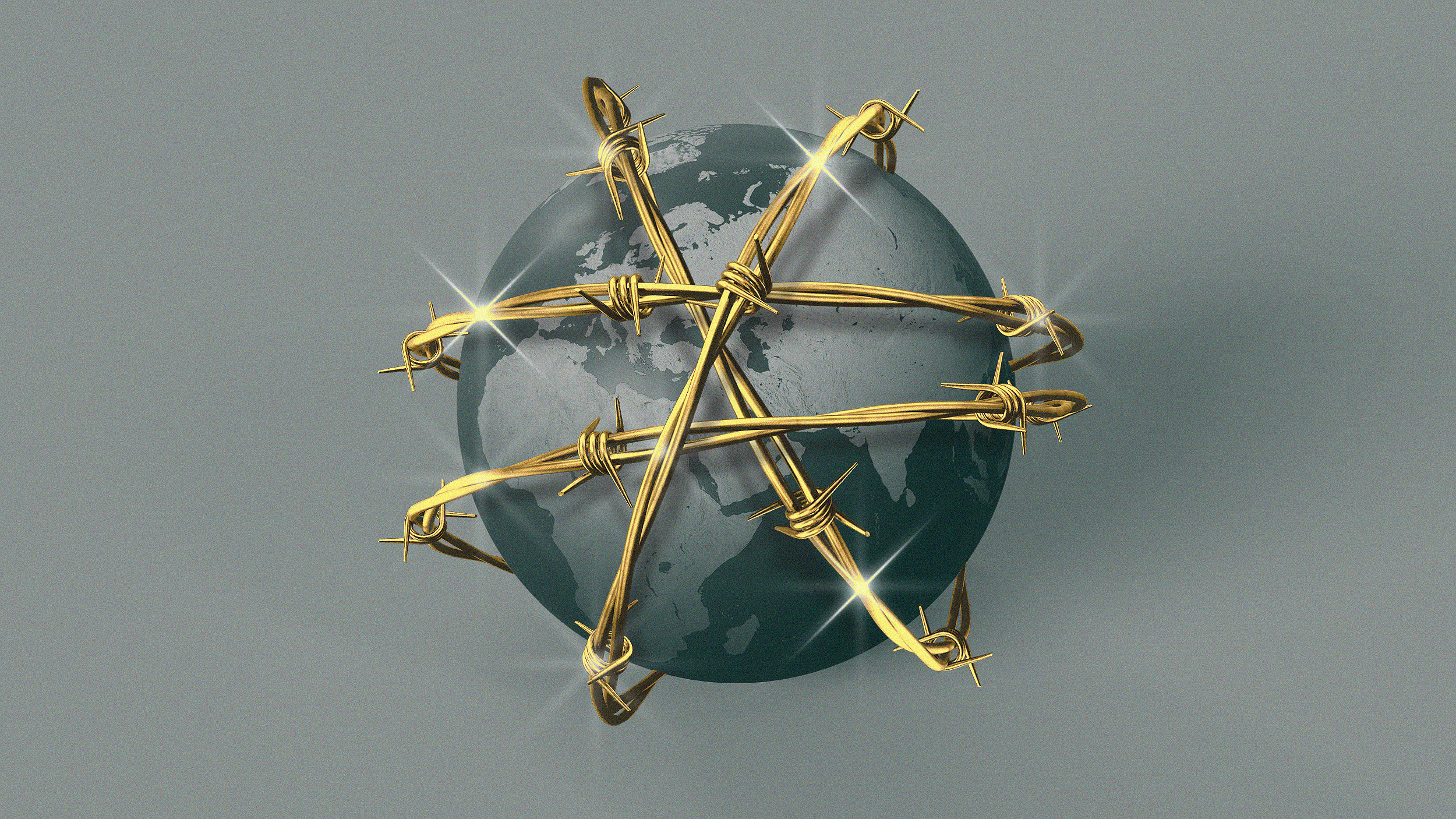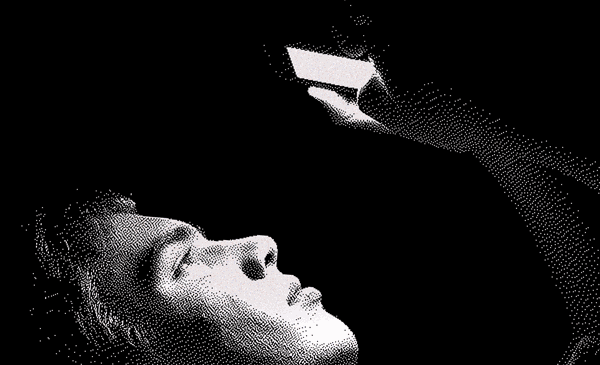494 – It’s a Dog-nosed World: Accidental Cartography Revisited

Do you have to be religious to see a face in burnt toast? Probably not, but believers are more likely to attribute such a face to Jesus (1). Believer in this case mostly refers to christians,- even more specifically to catholics, who are steeped in the iconography of saints, and thus more adept at picking out holy faces from random places.
For our belief system colours our perception of the world, and this perception in turn feeds into our beliefs. Muslims, for example, have their own version of the Jesus-on-toast-style apparitions (2). Since they abhor the graven image as much as they venerate the Quran’s God-givenness, their epiphanies are mainly of the literate kind: Quranic quotes, often the written name of Allah or one of his 99 epithets, always in the flowing Arabic script of the original.
The general term for this phenomenon – finding meaning in patterns that have not been designed to convey any – is pareidolia. Our pareidolic tendencies are more common than we’d perhaps like to think; the Rorschach test, teasing out our inner thoughts by inviting our opinions on random ink blots, was designed to exploit them.
There is a specific subset of pareidolia that concerns us here: cartocacoethes – seeing maps in non-cartographic patterns. Do you have to be a map nerd to see the shape of a state or country in the fried chicken on your plate? No, but it helps. This blog has previously featured quite a few examples of this phenomenon – I prefer the term ‘accidental cartography’ – sent in by readers of Strange Maps (see #350 and #424).
The second entry was composed by the submissions generated by the first one. It seems the readers of this blog are predisposed to perceiving accidental cartography in their surroundings. This, then, is a third instalment of accidental cartography – featuring a multitude of maps (or rather: ‘maps’). This batch confirms a few findings from the previous two entries:
The following selection of accidental cartography is arranged by subject, not substance. Some images take a bit of a stretch of the imagination, others are spot-on. All were sent in by kind readers of this blog.
Lake America

“For as long as I can remember, every fall I have hiked Monument Mountain (from which the photo was taken) with my dad and have always noticed how much [Agawam Lake in Great Barrington, MA] looks like the contiguous United States,” writes Sam Graulty. “The borders have shifted over the years (or maybe my imagination has atrophied some) and even though New England streams off to nothing, there are two short stubby Floridas and the Great Lakes region isn’t perfect, I think it’s pretty spot on.”
More American Water

“I just looked on my kitchen table this morning after spilling some water,” writes Daniel Wolff from Berlin, “and I found North America! Florida is there, and so are the Great Lakes, etcetera.”
Give Peas A Chance

This looks like a set-up, but Sean ‘S-Factor’ Owen, who sent this image in from Texas, claims: “I just happened to stop by the pea bowl for seconds and found them aligned like that! I had convince everyone at the house to stay away from the bowl until I got my camera.”
America In My Glass

“So I was at the local pub, and upon finishing my pint, lo, there was America in my glass,” says_ Scott Launius. “The Atlantic seaboard is pretty weak (unless maybe Cape Cod has been moved to South Carolina), but the other three borders are almost dead on. If you’re curious, the beer was a Gonzo Imperial Porter brewed by Flying Dog Brewing based out of Frederick, Maryland, purchased at Ashley’s in Ann Arbor, Michigan.”
Trash North America

America apparent in a bit of paper towel thrown by the wayside. Sent in by Christopher Swasey.
Crackers and Cheese Northwest

Matt McMillion was eating cheese on crackers when he discovered a piece that looked exactly like Idaho, “especially on the northeast border. I then started looking through the other pieces and found a very good Washington state, Olympic peninsula and all – so I threw a cracker in there to represent Oregon and had a pretty good accidental Pacific Northwest map.”
Bruschetta, DC

“I was at happy hour (in Washington, no less) with some friends the other day and we got this square shaped bruschetta/pizza appetizer. As people pulled off chunks, I looked down and noticed that the shape of the still uneaten bruschetta, and the way it happened to placed at an angle on the plate, made it a pretty good likeness of our city-state,” says Alex Seitz-Wald. “It’s missing the Anacostia River and Georgetown’s fallen into the Potomac, but I liked that there’s a little bit of bread/land on the other-side representing Teddy Roosevelt Island or Arlington.”
A Slightly Pudgy Massachusetts

“When I spotted this street repair on a crosswalk in Palo Alto, California, I instantly said, My gosh, that’s New York,” writes Rick Rubinstein. “My companion, without prompting, said the same thing when I stopped to take the picture. On comparison with an actual map, though, it’s obviously a (slightly pudgy) Massachusetts.”
California Rock

“I’d like to share a rock I found while hiking that is eerily similar to the shape of California,” says Stella Cousins. “Found it in Peters Creek, near the town of La Honda – in California. My favorite part is that a thin layer of rock has been worn away in the region of San Francisco Bay, making it look ever so slightly more like an actual map. Also, the dark part of the rock is the wettest part of the state, home of foggy redwood forests.”
Tortilla, Minnesota

Some years ago, Lisa Ofstedal was eating at a Chili’s restaurant in Eagan, MN. “In our bottomless bowl of chips and salsa, we discovered a tortilla chip that looked astoundingly like the state of Minnesota. We took it home and it became a running joke for awhile.”
“Well, for some holiday or other I decided to take the joke to the next level, so my dad built a tortilla chip-sized shadow box, which my mom lined with a small piece of velvet. I mounted the chip in the shadow box to be preserved forever and presented it to my boyfriend.”
“As it turns out, the chip outlasted our relationship, and he solemnly gave it back to me in the mist of a painful break-up. I display it to this very day. As a native Minnesotan and, more recently, a real Minnesota enthusiast, it’s easily one of my most prized possessions.”
Bubbly New Jersey

Mark Goetz was fooling around with the plastic screen cover he got for his iPhone, “when I noticed that the part of the air bubble underneath it bore a resemblance to my beloved home state of New Jersey, in particular the Atlantic coastline and the Cape May peninsula. With a little coaxing, I managed to make a decent facsimile of the whole state and snap a picture of it.”
The Maine Carpet

Patrick Banks lives in Portland, Maine; “I was pleased to realize I have a tiny accidental map of my adopted home state on my carpet.” Let’s hope it ties the room together.
Vinyl Montana

Not quite a case of accidental cartography, but too cute not to include here. This map of Montana is also a record. “In 1999, John Linnell of They Might Be Giants released his solo album State Songs,” says Wilford Nusser, who sent in this image. “The vinyl release of the single ‘Montana’ is shaped like the United States!”
Chicken Blighty

Chicken, especially when fried, is an excellent medium for accidental cartography. Says the reader who sent in this nugget: “I found this very odd piece of chicken that bears a resemblance to the United Kingdom!”
Rusty Britain

“I stopped dead in my tracks and said to my wife, Honey? Look at this!” While out walking on Nellie Road in Walhalla, South Carolina, Daniel Wright picked up this rusty piece of steel, about 8.5 inches tall, which does bear a striking resemblance to the island of Great Britain. “When I got to the house I quickly got out my World Atlas and did a side-by-side. Wow! I have not removed, edited, shaped any part of it. This is indeed just as I found it.”
Cloud Britannia

This picture of the sky over the Italian town of Valdobbiadene, well known for its prosecco, is another image of Britain, this time in a cloud. (Clouds have a tendency to appear Britain-like, as discussed in #154.) “By the time I took my cellphone and activated the camera, the clouds had slightly changed their shape, but Great Britain and a hint of Ireland can still be recognised,” says Ugo Frasson.
Spitting Image

“Quite disgusting, I know, but my friend spotted this hunk of gob on the ground that looked (almost) like a map of Britain and Ireland,” says Sarah Higgins. A spitting image indeed.
Frozen Kingdom

“So as I was walking in the hills near where I live during February’s cold snap, I couldn’t resist snapping this photo of what appears to be the UK, frost on a frozen Loch Glow,” writes Tom Nurick, from Perthshire in Scotland.
Afri-Chicken

“So one day I was just enjoying my meal in the BYU-Idaho cafeteria and noticed my chicken looked exactly like Africa,” says Erin Heiden.” It totally made my day!” Accidental cartography will do that to you!
Africa in Rotterdam

“This looks just enough like Africa,” says David de Jong, writing in from Rotterdam.
Accidental Africa

This accidental map of Africa was sent in by Bill Bartelt. The Horn is pointing the wrong way, but otherwise uncannily accrate.
Africa in a Crumble

This map of Africa was found by John Cheong-Holdaway in Melbourne, Australia, more specifically, in Tin Alley at Melbourne University.
Oil Patch Africa

Jens Frank sent in this image of a small oil spill, taken on the dusty streets of Dushanbe, in Tajikistan.
Africa, Gall-Peters Towel

“Sat on the side of the bath contemplating the day ahead I noticed that a towel carelessly tossed on the rail bore an uncanny resemblence to Africa,” writes Carl Harris, specifying: “Gall-Peters projection!”
Iranian Omelette

“A koo koo sabzi is, to put it in western terms, a type of Iranian omelette featuring fresh herbs and spices, much like the Italian frittata,” says Jordan R. Montgomery. “This one ended up looking like Iran. Fitting.”
Slovakia for Bee-eaters

“On a hill, a vertical fault let some European bee-eaters (Merops apiaster) dig their holes to nest,” says Vlad Roman. “The fault looks very similar to Slovakia, whereas the holes correspond, from left to right, to [the capital] Bratislava, and [main cities] Poprad and Preov.”
On South American Street

Juan M. sent in this picture, showing a crown of tree leaves framing a street view with a remarkably accurate representation of the South American continent.
Rainy India

Rain on a bench, the drops conjoining to form something resembling India. And then there’s more drops, forming a Sri Lanka that’s wildly inaccurate – but at least it’s there. Thanks to Jacob Kalichman for sending in this picture.
Down Under in a Schnitzel

“I ate a piece of chicken schnitzel that looked like Australia. I admit I tore a piece off, but I did that while it was in the bag. Only after I put it on my plate did I notice the resemblance,” writes Kieran Easter.
Australian Bacon

“While cooking breakfast this morning I came across a sizeable chunk of Hormel Bacon that seemed to resemble Australia,” says Paul S. “I googled some maps and sure enough, it was a fairly good match, even having the peninsula in northern Queensland. I couldn’t resist adding the Tasmania bit before photographing it on an ocean-blue Tupperware lid.”
Taunting Australia

“Sat at my desk one afternoon looking out at the cold, miserable day outside; life played a cruel trick and taunted me with an image of somewhere warm, exciting and very far away,” writes Ed Morgan from wintry Ireland.
World Map (Duvel Projection)

“One evening, while enjoying a nice Belgian beer (I believe it was Duvel), I found this rather striking image of the world map in my foam.” says Joep Klabbers. “Africa seemed to be missing, though.” Well, that saves us the whole Peters vs Mercator discussion.
Another World Map

Another ‘world map’, sent in by Matt Kreger.
It’s a Dog’s World

“My dog has a map of the world on her nose. Sort of,” writes Mililani Smythe. But of course: there’s the American continent, right in the middle!
Albanian Weather

Says Steve Wilson: “One day I looked up and saw a map of Albania hanging in the sky! The odd thing is that I was actually traveling in Albania at the time! Some kind of airborne nationalist reminder? (They’re a patriotic bunch).”
Paris As A Horseshoe Crab

Paris has been called many things, most much nicer than a horseshoe crab. Yet that is what it, unmistakably, resembles. Thanks to Scott Kafarski for sending in this map.
Chad Malevich

This head looks like Chad. Not any Chad you would know personally, nor any of the hanging chads that proved so frustratingly inconclusive after the US presidential election of 2000, but the country Chad. Many thanks to Rory Beaton for sending this in.
———
(1) or Mary, depending on perceived presence or absence of facial hair.
(2) another example of the self-reinforcing circularity of belief systems is found among the druze, a Lebanese sect the tenets of which include a belief in reincarnation. This is supported by stories of young druze children remembering past lives, apparently corroborated by the families of the deceased. This phenomenon does not seem to occur in the neighbouring non-druze (i.e. christian and muslim) communities. Interesting, but nothing to do with maps.





